Click on images to enlarge
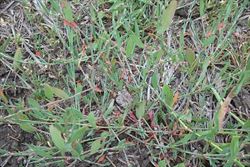
infestation (Photo: Sheldon Navie)
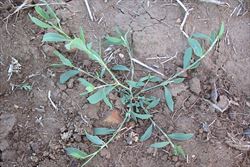
habit (Photo: Sheldon Navie)
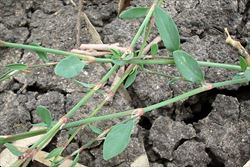
stems and leaves (Photo: Sheldon Navie)
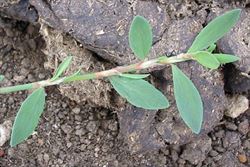
stem and leaves with whitish sheath-like bases (Photo: Sheldon Navie)
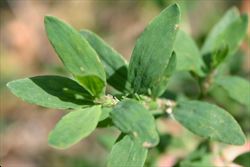
close-up of leaves (Photo: Trevor James)
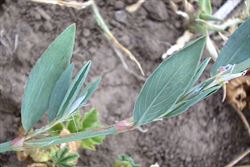
close-up of leaf undersides (Photo: Sheldon Navie)
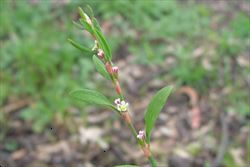
upper leaves and flowers (Photo: Sheldon Navie)

seedling (Photo: Trevor James)
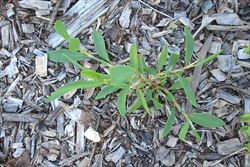
young plant (Photo: Sheldon Navie)
Scientific Name
Polygonum aviculare L.
Synonyms
Polygonum aviculare L. var. diffusum Meisn.Polygonum monspeliense Pers.
Family
Polygonaceae
Common Names
bird grass, birdgrass, common knotgrass, door-weed, doorweed, goose grass, goose-grass, hogweed, ironweed, knot-grass, knotgrass, knotweed, mat grass, matgrass, pink weed, pinkweed, polygonum, prostrate knotweed, Ray's knotgrass, sea knotgrass, small leaved knotgrass, stone grass, stonegrass, way grass, waygrass, wire weed, wireweed, yard knotweed
Origin
This species is widespread in temperate regions of the world, and probably originated in Europe.
Naturalised Distribution
Widely naturalised in southern, central and eastern Australia (i.e. in southern and central Queensland, New South Wales, the ACT, Victoria, Tasmania, South Australia, the southern parts of the Northern Territory and the southern and western parts of Western Australia).
Notes
Wireweed (Polygonum aviculare) is regarded as an environmental weed is a serious weed of crops, pastures, disturbed sites and waste areas in Australia. It also invades native vegetation and is regarded as an environmental weed in New South Wales, Victoria and South Australia.

